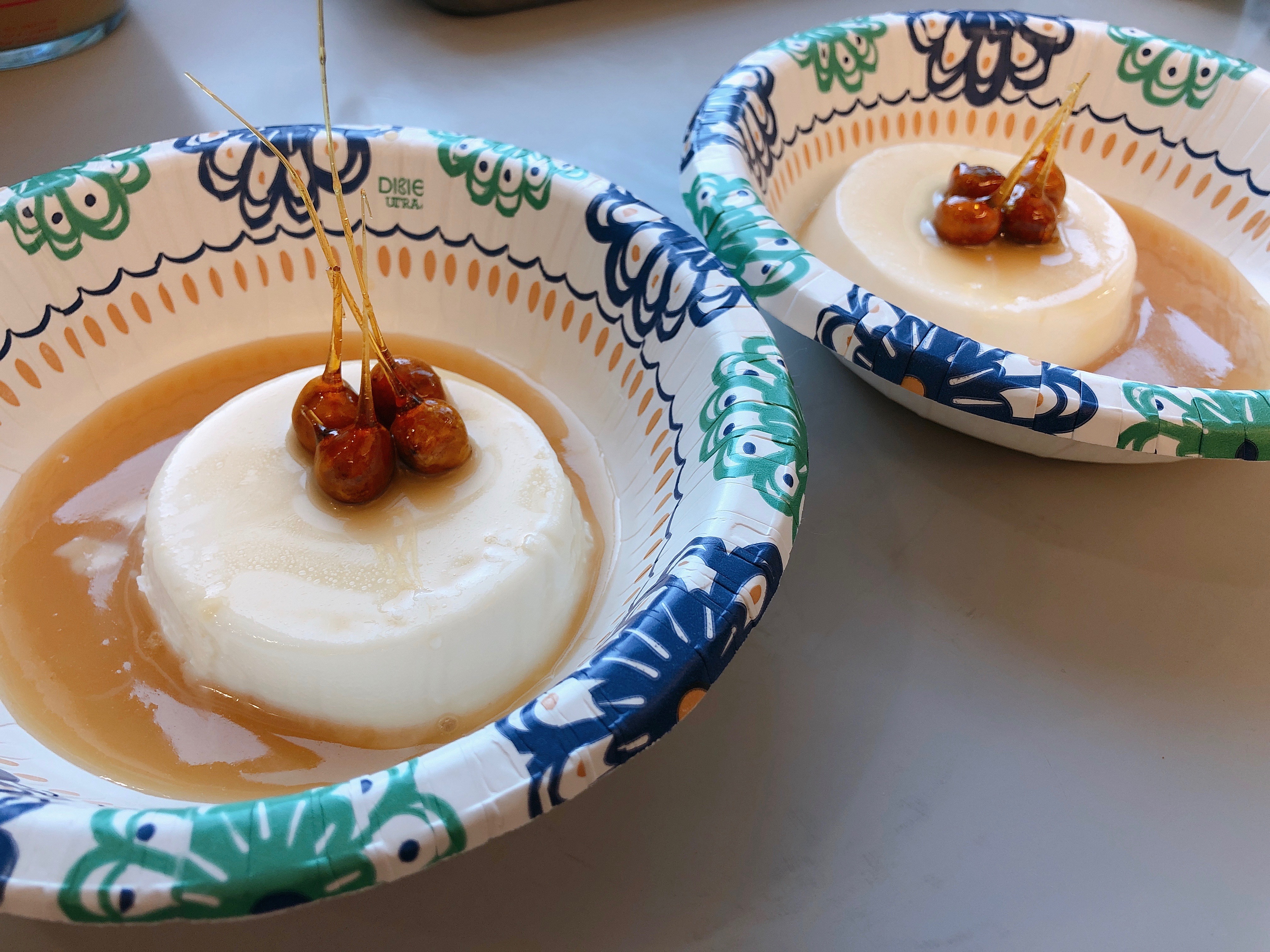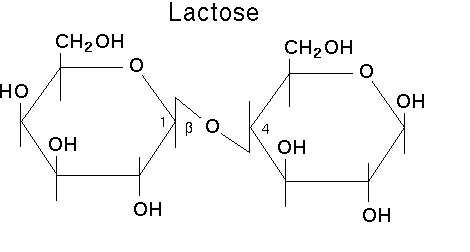How to make Panna Cotta with Caramel Sauce
This sweet Italian dessert consists of panna cotta, a creamy liquid that then forms a soft gelatin, which is then covered with caramelized sauce and decorated with candied hazelnuts.
Part 1: Making the Vanilla Bean Panna Cotta with Salted Carmel Sauce
Materials: Ingredients:
- Small bowl – 1 cup whole milk
- Four 4oz Ramekins – 2 teaspoons unflavored gelatin
- Saucepan – 1 cups heavy cream
- Thin sharp knife – 1/4 cup sugar
- Liquid measuring cup – 2 teaspoons pure vanilla extract
- Dry measuring cups and spoons – Cooking spray
- Spoonula
- Whisk
Directions
1. Spray a paper towel with some cooking spray and wipe the insides of the ramekins.
2. Pour the milk into the saucepan and sprinkle the gelatin evenly over top. Let this soften for 5 minutes or until the surface is wrinkled and the gelatin grains look wet and slightly dissolved.
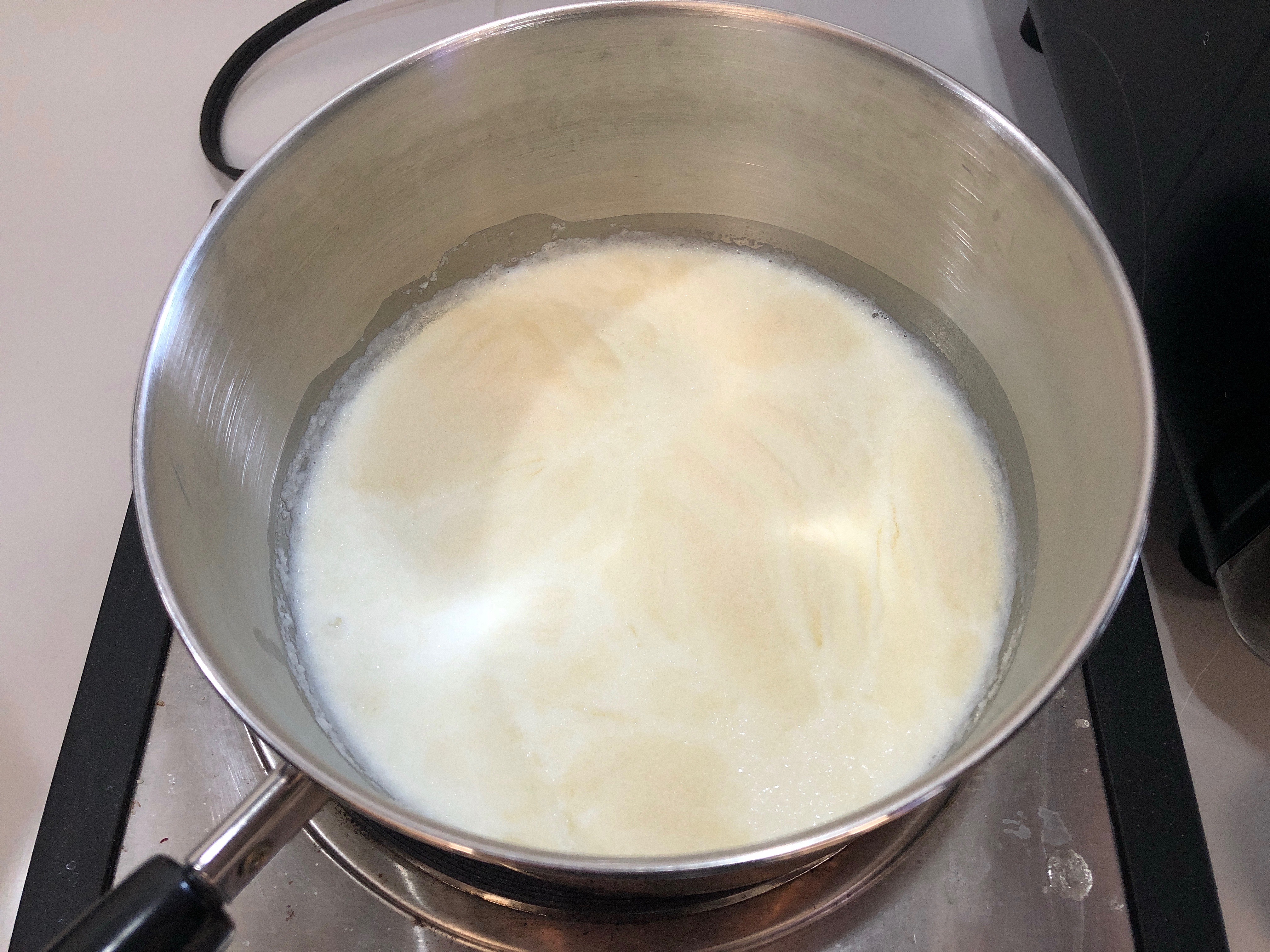
3. Set the saucepan on low heat and warm the milk gently, stirring frequently so that the gelatin dissolves. Never let the milk boil or simmer and if there is steam remove it from the hear and let it cool. This part should not take long.
4. After 2 minutes of warming, rub a bit of the milk between your fingers to make sure it’s smooth, or dip a spoon in the milk and check the back for distinct grains of gelatin to make sure the gelatin has dissolved.
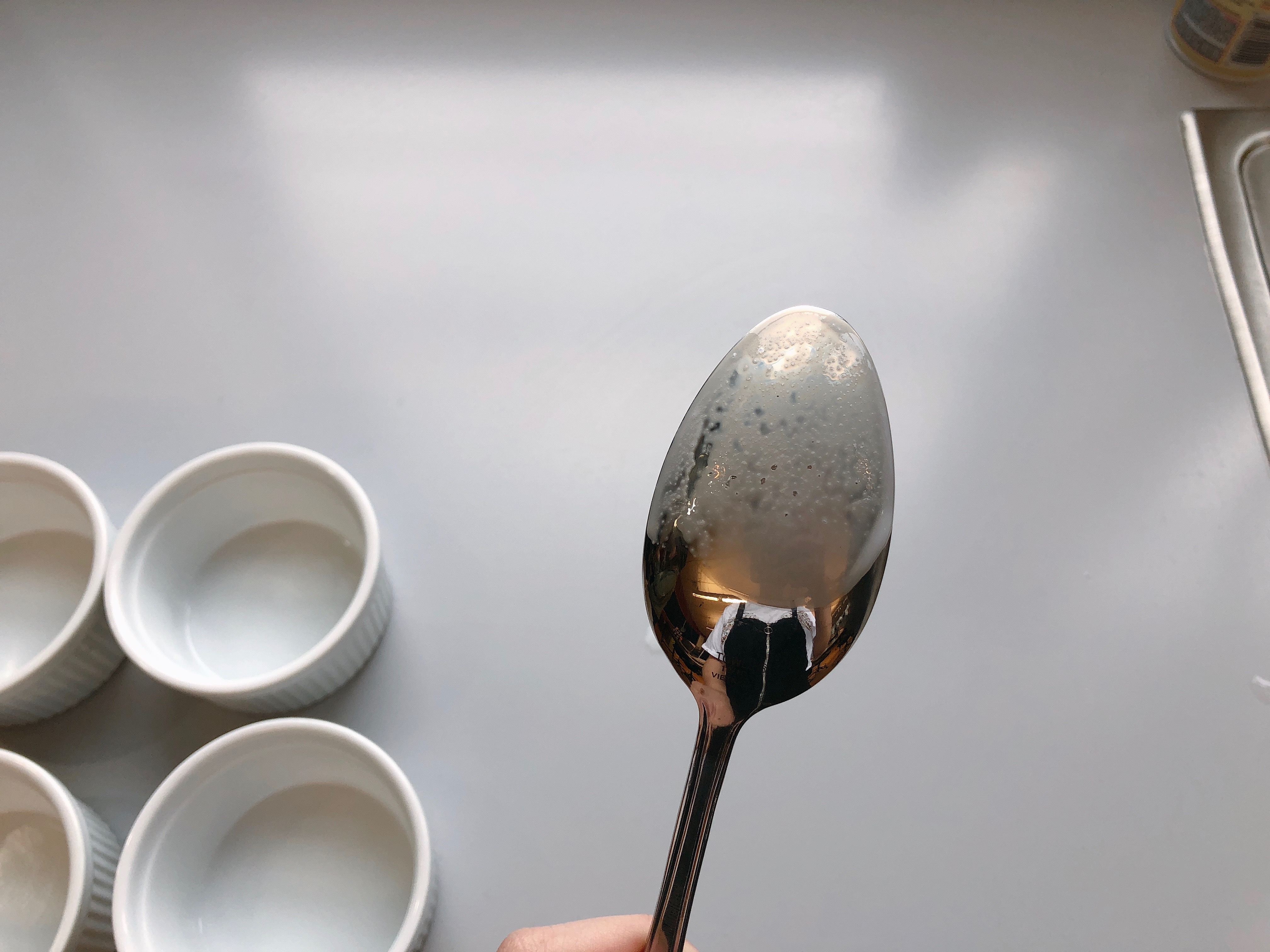
5. Next stir the sugar into the milk and continue warming until it dissolves too. This should take about 5 minutes and never reach a boiling level.
6. Once the sugar is dissolved remove the saucepan from the heat and whisk in the cream, vanilla, and salt.
7. Finally pour the panna cotta into the oiled ramekins and refrigerate overnight.

Part 2: Making the Caramel Sauce and Caramel Coated Hazelnuts
Ingredients:
For the caramel For the caramel hazelnuts:
- 2 cups sugar – Whole hazelnuts, toasted and peeled
- 1/2 cup water – 3 tablespoons water
- 7 tablespoons unsalted butter – 4 ½ tablespoon sugar
- 1 1/2 cups heavy cream – 1 pinch salt
- 2 teaspoons sea salt, crushed
Materials:
- Hot plate/burner, must be completely clean
- 2-quart saucepan
- Instant-read kitchen thermometer
- Rubber spoonula/spatula
- Pastry brush
- Whisk
- Toothpicks
Directions: Making the Caramel Sauce
1. Have a bowl of cold water nearby in case you get the hot sugar on your skin.
2. On medium heat, warm the cream and butter in the saucepan until the butter melts. Then take it off of the heat and pour the mixture into a measuring cup.
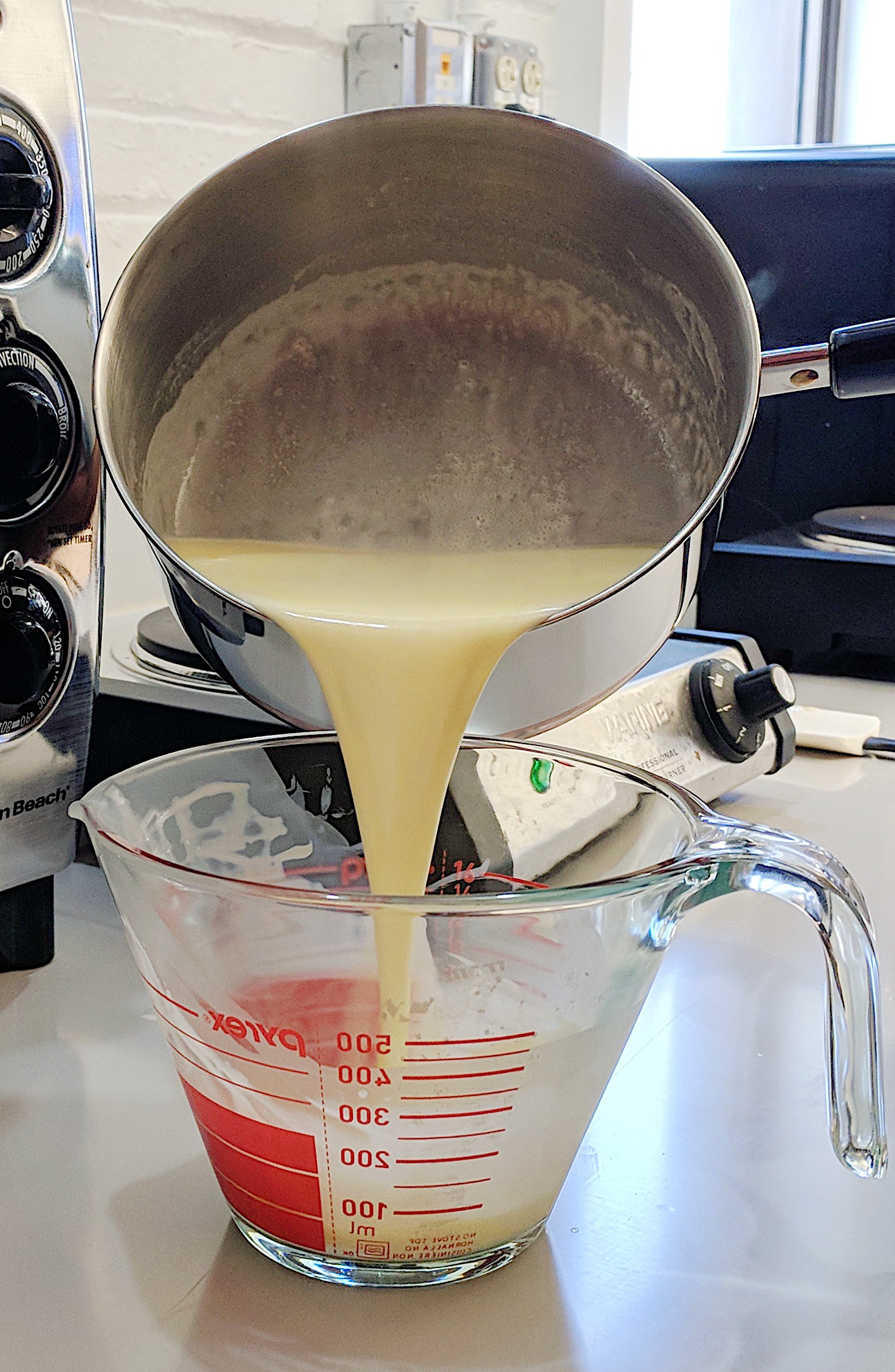
3. Combine the sugar and water. In the saucepan, combine the sugar and water and stir until the sugar is evenly moistened and combined so a thick grainy paste if formed. Next you will wipe down the sides of the pan with a damp pastry brush so that no sugar crystals above the surface of the mixture. Then spray a paper towel with non-stick cooking spray and wipe down the inside of the pot. Once this is done you will clip on a thermometer to the saucepan
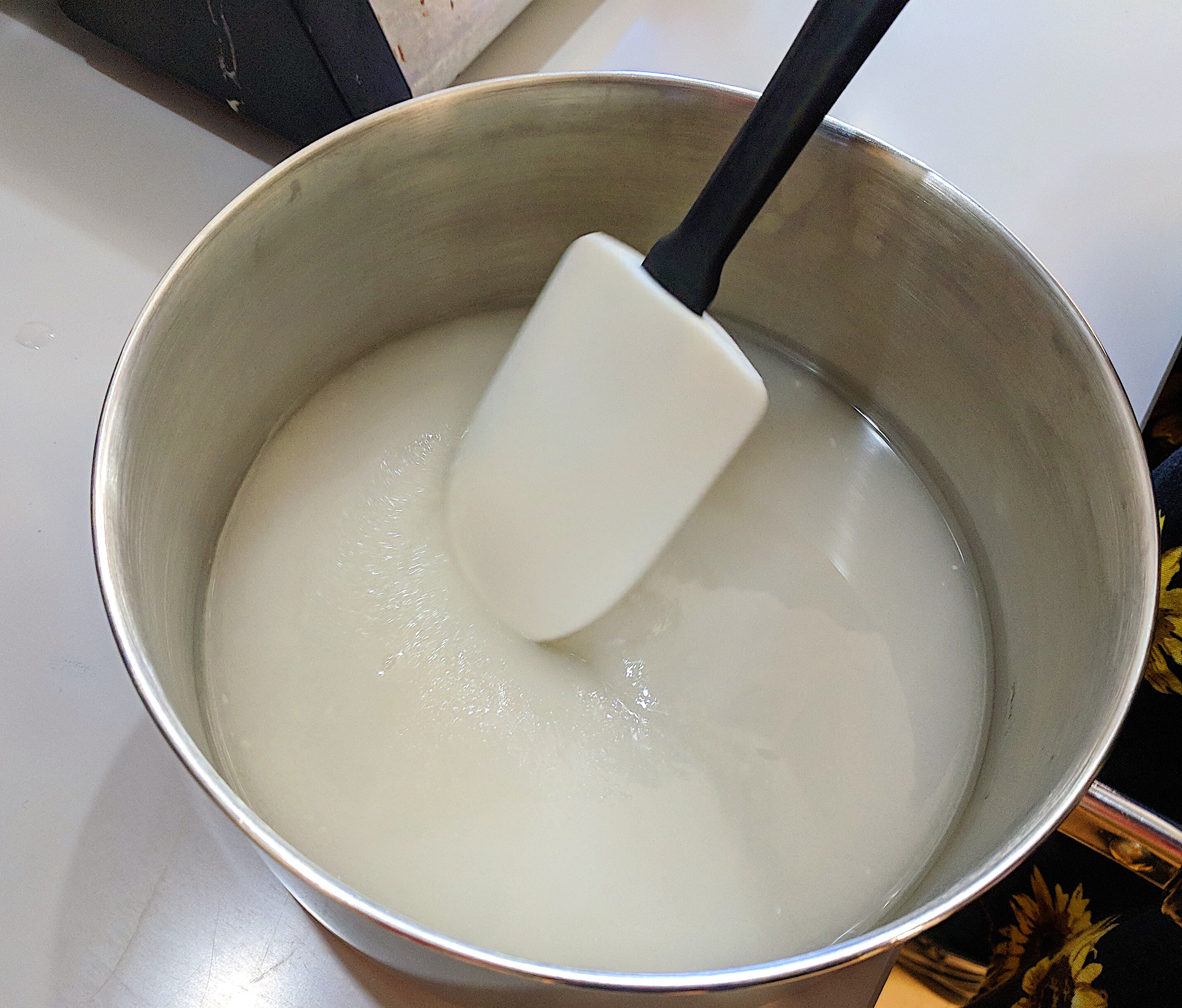
4. Over medium-high heat you will cook the sugar syrup without stirring and you will let it come to a boil. Around 250°F, the sugar syrup will turn transparent and boil rapidly. Around 320°F, the mixture will start to caramelize and it is at this point you can decide how dark or light you want your syrup to be. Once it is at your desired color take it off of the heat but do not let it go past 350 degrees.
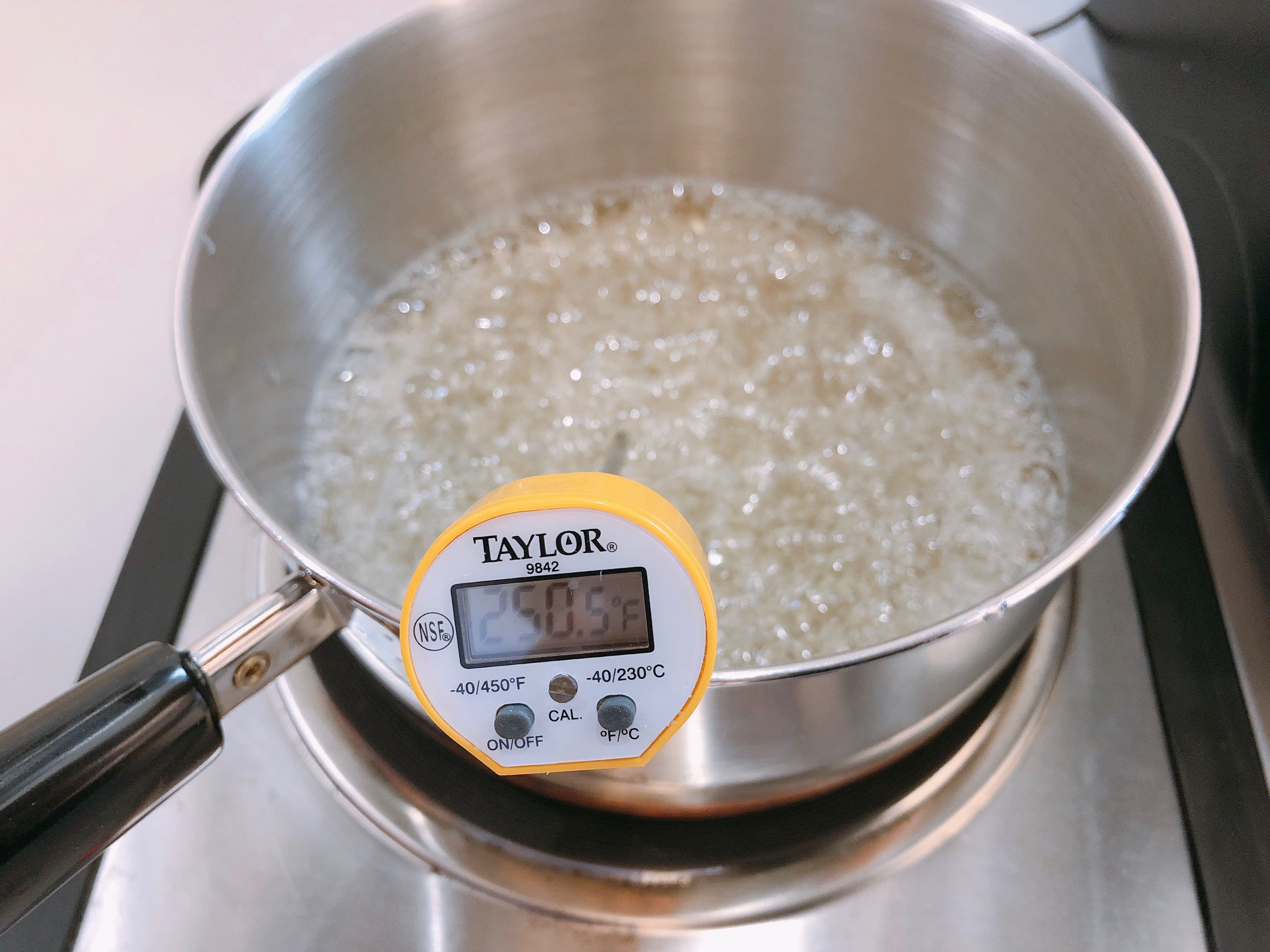
5. put your cream and butter mixture in the microwave for a few seconds if it is not hot and then slowly pour this mixture into the sugar syrup while whisking the syrup thoroughly and quickly. Once all the butter cream mixture has been mixed in stop mixing.
6. Next whisk the salt into the caramel.
7. Then pour the caramel into a glass measuring cup so it can cool.
8. Finally let the caramel cool to room temperature.
Directions: Making the caramel covered hazelnuts
1. Preheat the oven to 350ºF and line a baking sheet with parchment paper.
2. Spread the hand full of hazelnuts on the sheet and place them in the center of the oven. Let them roast for 12 minutes or until they are lightly browned.
3. Put a toothpick in each hazelnut.
4. Then melt the sugar and water in the saucepan like before on medium heat and after 320°F take the syrup off the heat once it has reached the desired color. Let this cool for only about a minute.

6. Next dip each hazelnut in the caramel by holding the toothpick. Place the hazelnut over a sink so the caramel drips down creating icicles and keep them in place taping down the toothpicks.
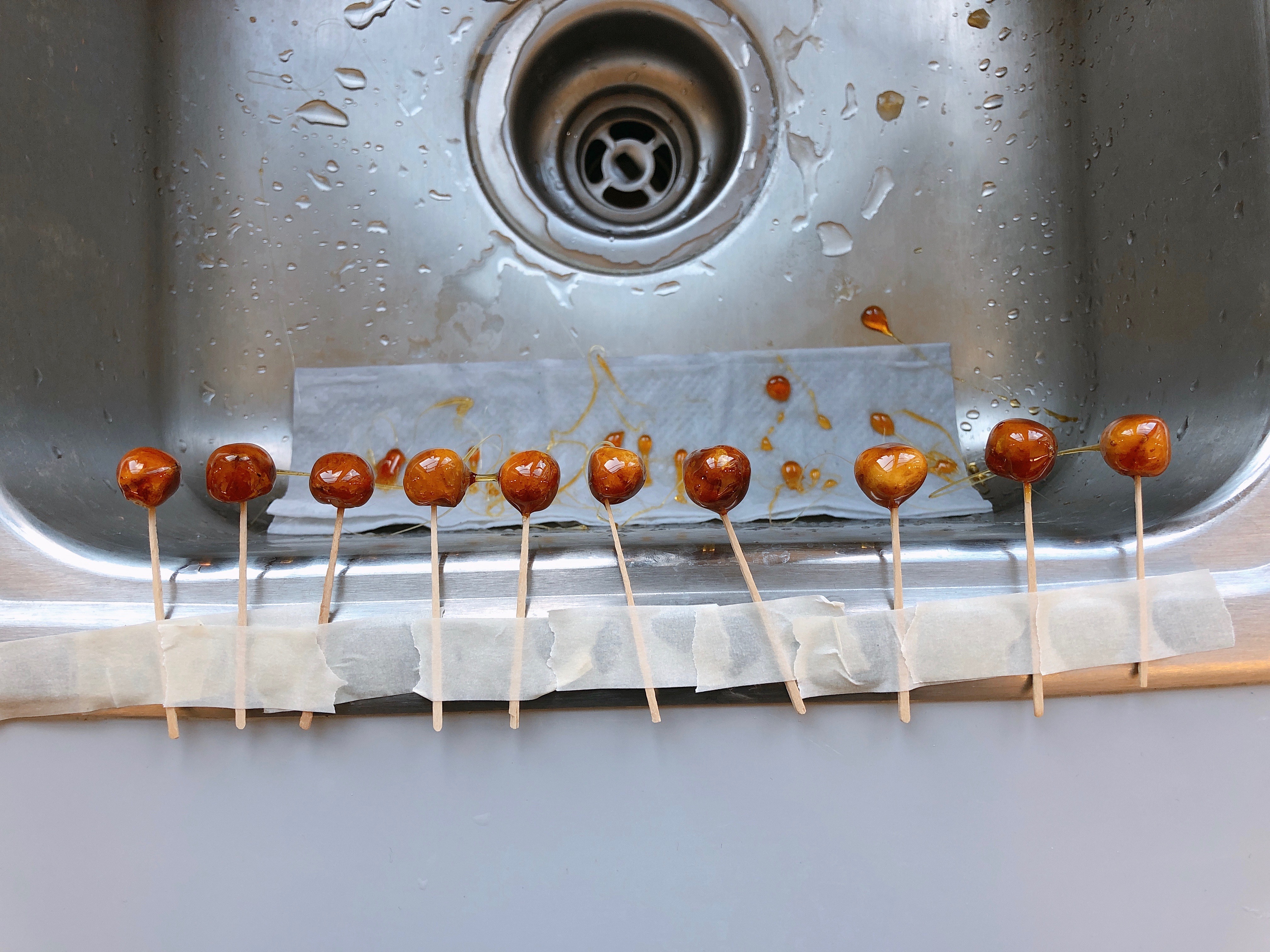
7. Let the hazelnuts cool completely.
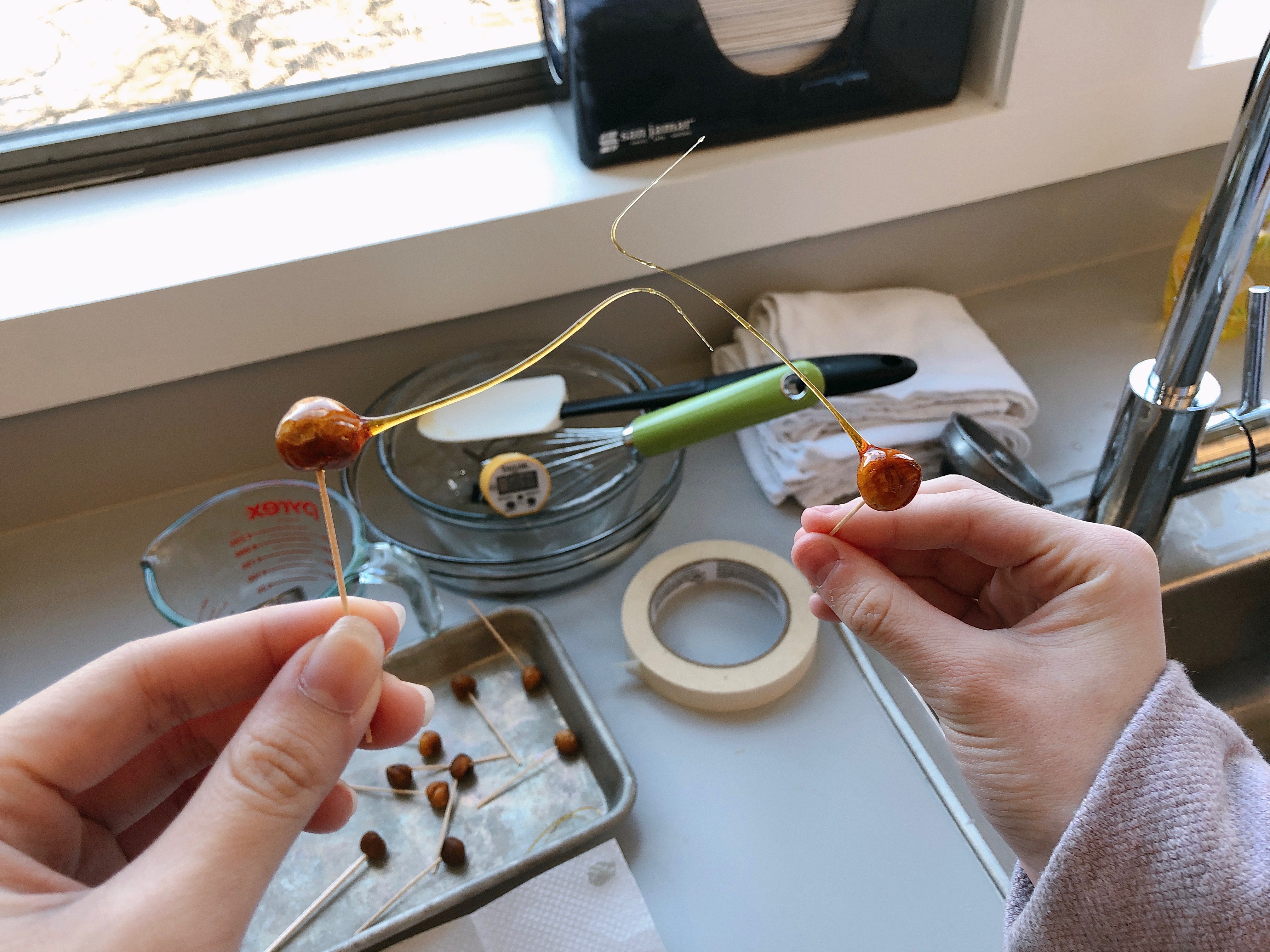
Directions: Unmolding and topping the Panna Cotta
1. Fill a bowl only half way with very warm water.
2. Run a thin knife around the top edges of the ramekin.
3. Dip the ramekin in the warm water up to its rim, and hold it for about 3 seconds.
4. Invert the ramekin onto a plate and gently shake so the panna cotta falls out.
5. Finally pour with the caramel sauce on the panna cotta and place candied hazelnuts on top
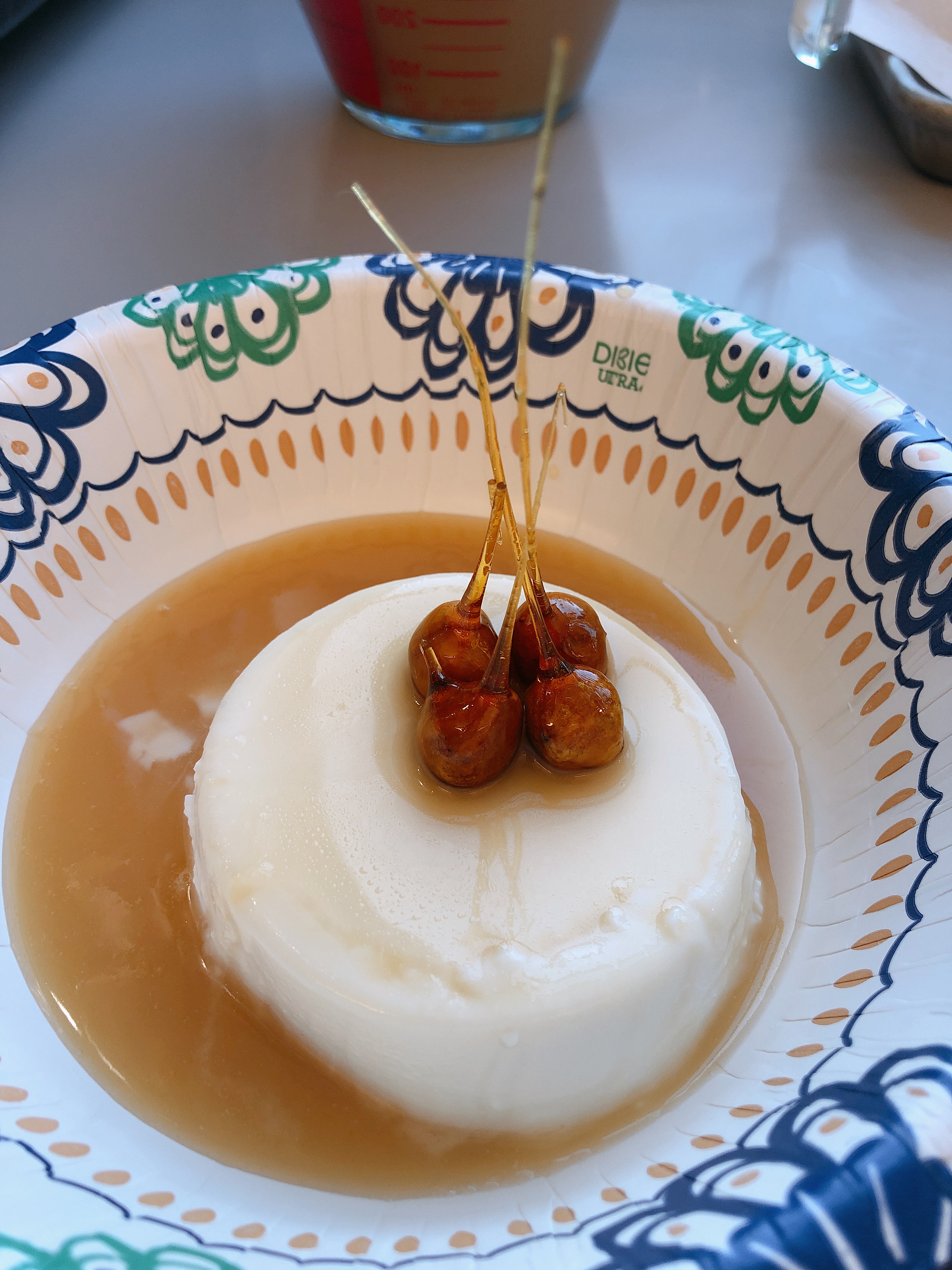
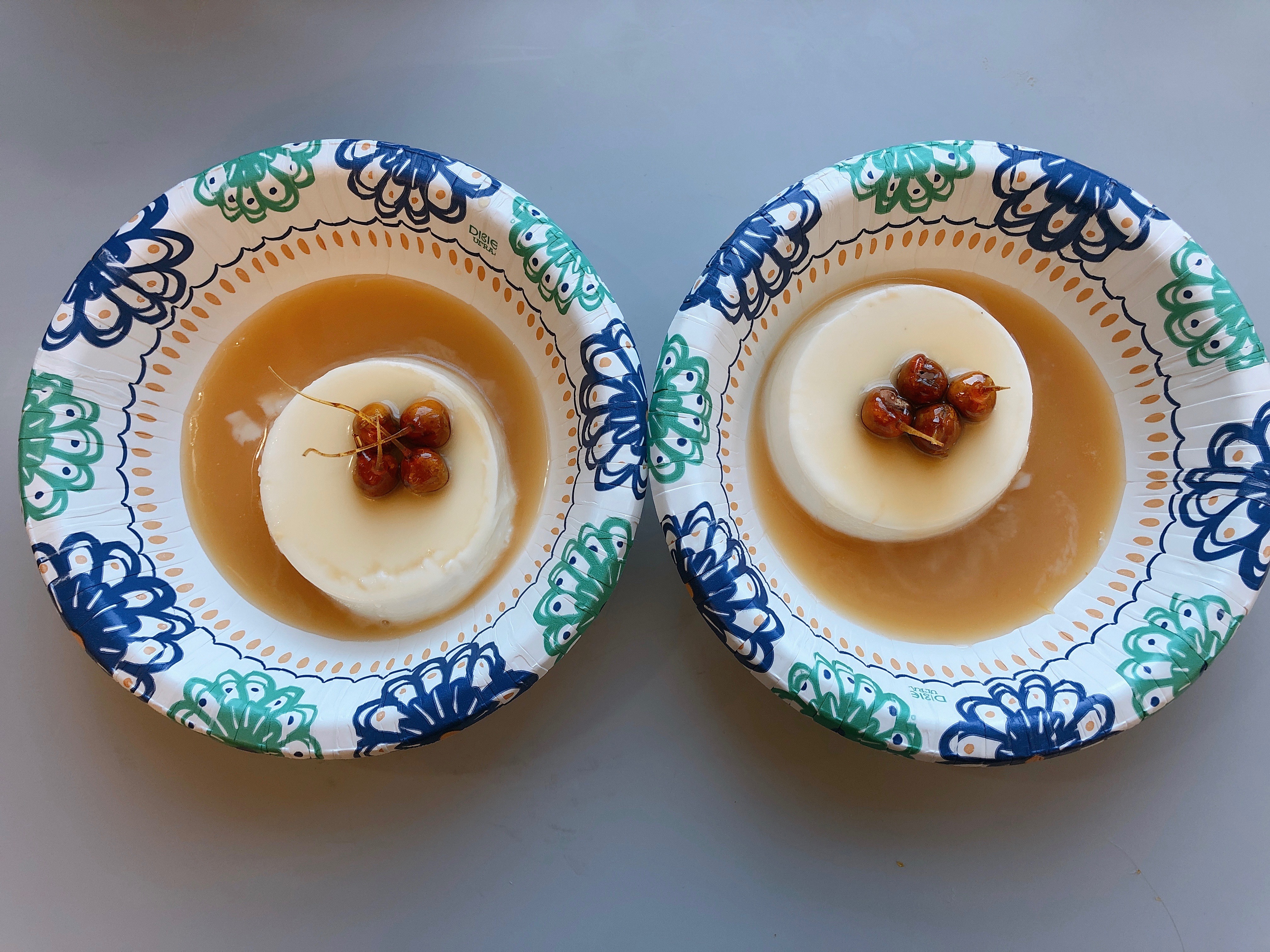
Here is the video reflecting on the Panna Cotta Van and I made in class!
Questions:
- Why is the darker caramel, less sweet?
- The caramel when it is darker becomes more bitter and has this different color to it because of the increased oxidation of the sucrose that is boiling which results in the caramel molecules giving off the darker brown color and also making the caramel more bitter.
- At what temperature did YOU see caramelization chemistry occuring? How did you know?
- We saw caramelization happening when Van and I saw a change in the color of the sugar mixture. Before it was even at 320 degrees the second time we made the caramel for the hazelnuts we saw it caramelize before then because the mixture was turning a golden brown and bubbling up more than it was before.
